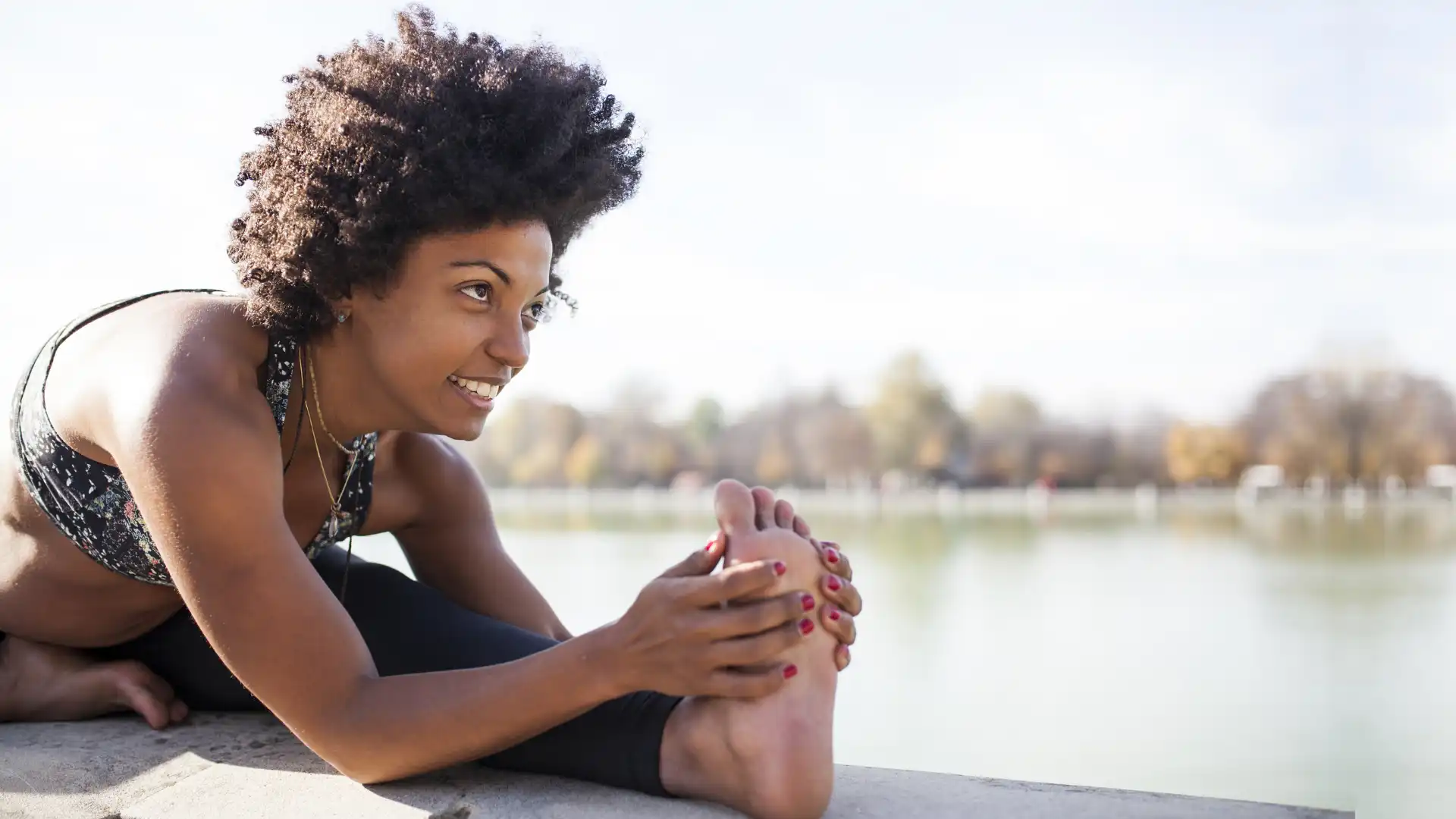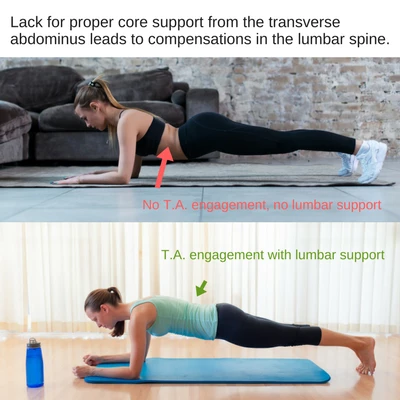To Stretch or Not to Stretch? Understanding Musculoskeletal Imbalances in Yoga

Most yoga students come to class with preexisting musculoskeletal imbalances, which impact their practice in numerous ways, and may even predispose them to injuries.
In this interview, yoga therapist and physical therapist Marlysa Sullivan discusses the role of muscle imbalances in yoga and why stretching a muscle may not lead to the results you’d expect.
Q. What exactly are musculoskeletal imbalances, and how do they affect our yoga practice?
Marlysa Sullivan: Musculoskeletal imbalances happen when a muscle or muscle group becomes too tight or too weak, and no longer is able to perform its normal function. This then has a spillover effect into other parts of the body, which then have to compensate and work harder than they’re designed to.
For example, it’s very common for the transverse abdominal muscle—the deepest layer of abdominal muscle—to be shut off. The transverse abdominal muscle is a key muscle for supporting the low back.
 So, for the yoga students where the transverse abdominal muscle doesn’t engage properly, there will likely be some low back issues present. They will not have a stable low back or a stable lumbar spine when they move. As a consequence, they end up moving unevenly, creating even more imbalance in the joints as well as causing some muscles to work harder and get really tight. So it leaves them imbalanced.
So, for the yoga students where the transverse abdominal muscle doesn’t engage properly, there will likely be some low back issues present. They will not have a stable low back or a stable lumbar spine when they move. As a consequence, they end up moving unevenly, creating even more imbalance in the joints as well as causing some muscles to work harder and get really tight. So it leaves them imbalanced.
When people start yoga with these kinds of imbalances and are expected to move into the Warrior poses or Downward Facing Dog without the requisite stability in the core body, it, unfortunately, tends to perpetuate these patterns of imbalance.
Q: So, imbalance in the transverse abdominis is one factor and that can lead to a lack of core stability. Are there any other common musculoskeletal imbalances that you think often affect yoga students?
Marlysa Sullivan: Yes, especially in the low back and hips. The other common imbalance is in the gluteus maximus and gluteus medius. They often don’t engage optimally or the right amount. So that creates less stability in our hips.
So, many yoga students have these unstable parts in the lumbar spine and the hips. Learning how to engage the glutes, so that you can move more effectively is important. This means learning not to crunch or grip in the glutes but engaging them in a way that helps to stabilize the hip and pelvis.
Q: Interesting. We usually think in terms of lack of flexibility, e.g. in the hamstrings, and how that affects our yoga practice. But you’re saying that the inability to engage a muscle effectively plays an equally important role?
Marlysa Sullivan: It often goes together. If you think about the lack of flexibility in hamstring muscles, for example, the hamstrings and the glutes both work to extend the hip. The glutes are really powerful muscles that are supposed to be used every time we walk when we extend our leg behind us.
But if our glutes aren’t working properly, then our hamstrings will be working too much. So, you can stretch your hamstrings every day as much as you want, but if every time you walk, you’re overusing the hamstrings, they won’t stretch out, they’re going to get tight.
So, when thinking about how to most optimally stretch your hamstrings, one thing to look at is taking away that overuse factor. So by strengthening the glutes and learning how to use the glutes in asana and yoga practice, that in turn helps you learn how to use the glutes in your everyday life. That will lessen the overstimulation of the hamstrings, and then you can actually stretch them more effectively.
If you’re just trying to stretch the hamstrings, but you never retrain your glutes, the hamstrings will never actually get that flexible, because they will constantly have the stimulation to overwork when you walk, which will create tightness.
Q: What is the origin of musculoskeletal imbalances? A simple lack of use or lack of awareness, like for example, when we don’t walk properly? Or is there a psychological or emotional component as well?
Marlysa Sullivan: Yes there is. One of the people who has done a lot of work in this area is the physical therapist Vladimir Janda. He did a lot of research to find out why are these the muscles that tend to always be shut down.
What he found is that it is very similar to people with neurological dysfunction. So, if our nervous system is constantly in a fight or flight response, our muscles are going to be triggered in that fight or flight response as well. So, if we’re psychologically and emotionally in a fight or flight state, certain muscles will always be engaged and turned on, which then makes other muscles turn off.
For example, the psoas muscles, the big hip flexor in front of the hip, is very much related to our sympathetic response. If you’re under a lot of stress and anxiety, the psoas muscle will get overactive, and this, in turn, will turn the opposite muscle off, i.e. the gluteus maximus.
So, part of the reason why the glute max isn’t working properly is often this opposite muscle facilitation of the psoas. So, if you’re constantly in a sympathetic, fight or flight state, and you’re trying to stretch your psoas and your hip flexors, it won’t have much effect, they’re not going to get very far.
It’s really by relaxing the nervous system, coming into a parasympathetic state and learning how to be in that parasympathetic state, that we can relax the psoas and engage the glutes. So, even being able to be mindful and aware of how to relieve and how to engage has to happen from that shift from sympathetic to parasympathetic.
So, one of the things that yoga does, which is very unique and different from other forms of exercise, is that it’s looking at the effect of the state of mind as well. If I’m very anxious, or if I get very anxious in response to stimulus, that’s going to affect how the muscles are working in my body.
So, we can use the more meditative and mindful aspects of yoga to create a calm space and in turn change our reaction to our emotions and thoughts. This will calm a hyperactive nervous system, and change the firing patterns of muscles to a more healthy, normal tone.
Q: You work a lot with chronic pain and yoga. Is this connected to chronic pain issues in the sense that these musculoskeletal imbalances predispose us for chronic pain issues down the road?
Marlysa: Definitely. With chronic pain, it goes out a step further: The whole nervous system has become overly sensitized and the threshold for activation becomes lower. Eventually, any amount of stress or any amount of anxiety, instead of just bothering us slightly, triggers us all the way to 100%. And in chronic pain, our whole brain changes as far as our internal maps of the body and how we become aware of our body. So, chronic pain is even more moved into that direction.
Q: Interesting. Can learning about our body’s specific musculoskeletal imbalances and how to correct them be helpful in terms of preventing back pain or other musculoskeletal issues down the road?
Marlysa Sullivan: Yes, because if you learn how to move your body most effectively, meaning, how to stabilize one part of your body as you try to stretch another part of your body, you won’t create strain.
As I said earlier with the psoas and transverse abdominals, if yoga students try to stretch the psoas, but don’t stabilize your lumbar spine, they can easily end up just extending their lumbar spine and compressing their back.
But if you learn how to stabilize your lumbar spine with the correct engagement of the abdominals and then stretch the hip flexors from there, you’ll actually get the stretch where you want it. So, part of stabilizing the body and learning how to engage properly allows you to bring the stretch where you want it and strengthening where you want it. This, in turn, is key to moving in yoga without creating injury.
Want to learn more about musculoskeletal imbalances? You might be interested in Donna Farhi’s online course! Anatomy of a Centered Body: Resolving Structural Imbalances in the Core Body – The Core Cylinder


